
A staple of Japanese cuisine, tamagoyaki is a Japanese omelette that consists of seasoned eggs that are cooked, folded into layers, and formed into a rectangular shape before being cut into bite-sized slices. It’s enjoyed as a component of a wide range of meals from the casual breakfast to the high end sushi dinner.
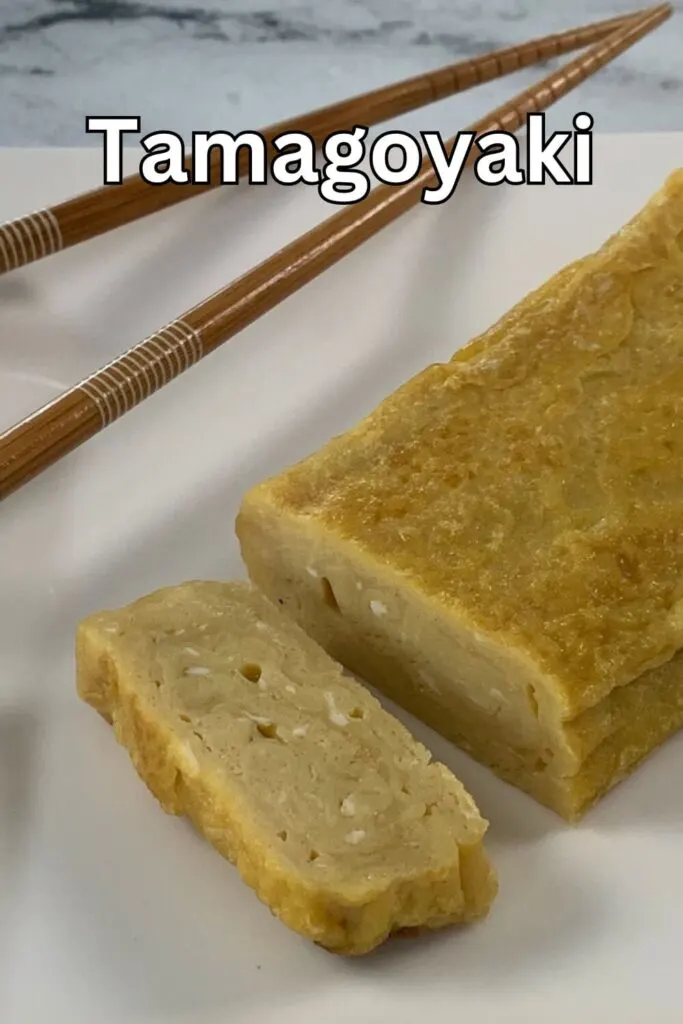
Table of Contents
What is Tamagoyaki?
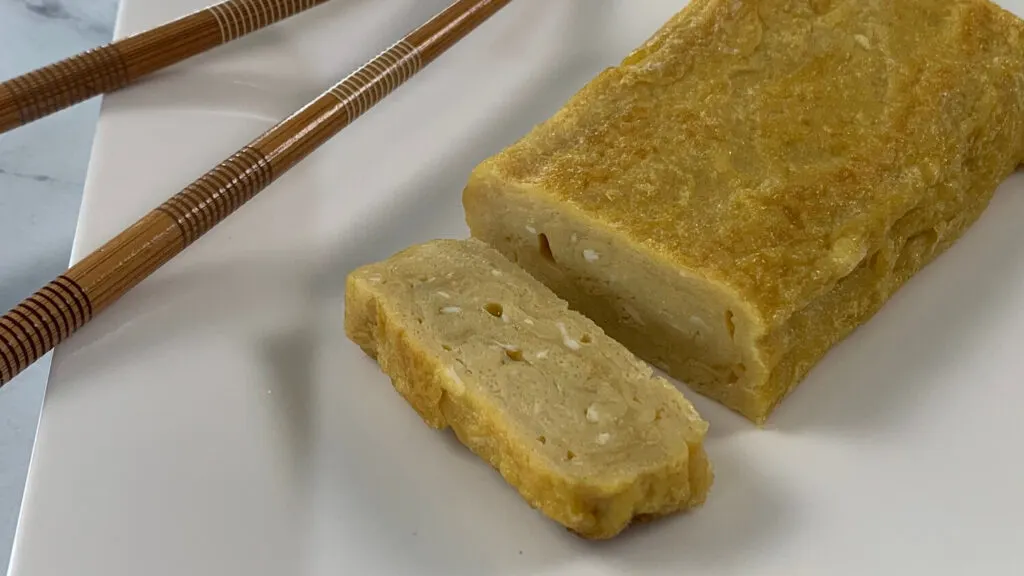
Tamagoyaki consists of eggs that are mixed with mirin, dashi, sugar, and soy sauce. This mixture is cooked into thin crepes which are folded onto themselves in four layers while being shaped into a rectangle. A specialized tamagoyaki pan is often used but a small skillet will work as well. The tamagoyaki is then cut into slices that can be easily eaten with chopsticks and served. I love the flavors of the egg and umami seasonings.
While many Westerners may view this as a more exotic looking take on an omelette, tamagoyaki is very familiar to those born and raised in Japan. You can find tamagoyaki in a wide variety of dishes ranging from being served as a part of a bento box in a Japanese train station to being draped over rice and served at a high end sushi restaurant.
Tamagoyaki can also vary in flavor and appearance depending on which region of the country it’s prepared. For example, in Tokyo tamagoyaki tends to have a darker color and be sweeter as it uses more sugar, a regular soy sauce, and less dashi. In Kyoto tamagoyaki uses more dashi, a lighter soy sauce and no sugar, giving it a more salty flavor and lighter color (this style is often called dashimaki tamago).
How to Make Tamagoyaki?
If there is one recipe where I would strongly recommend watching the video in addition to reading the instructions, this is it. While it looks more complicated than it is to prepare, it can be a little tricky at first and it certainly helps to have a visual guide when first making tamagoyaki.
1. Add the eggs, mirin, soy sauce, sugar, and dashi powder to a mixing bowl and whisk until everything is thoroughly mixed. I like using dashi powder in this mixture because it provides a strong concentration of dashi flavor to the omelette. However, you can substitute with two tablespoons of dashi if you would like a more subtle flavor in your tamagoyaki.
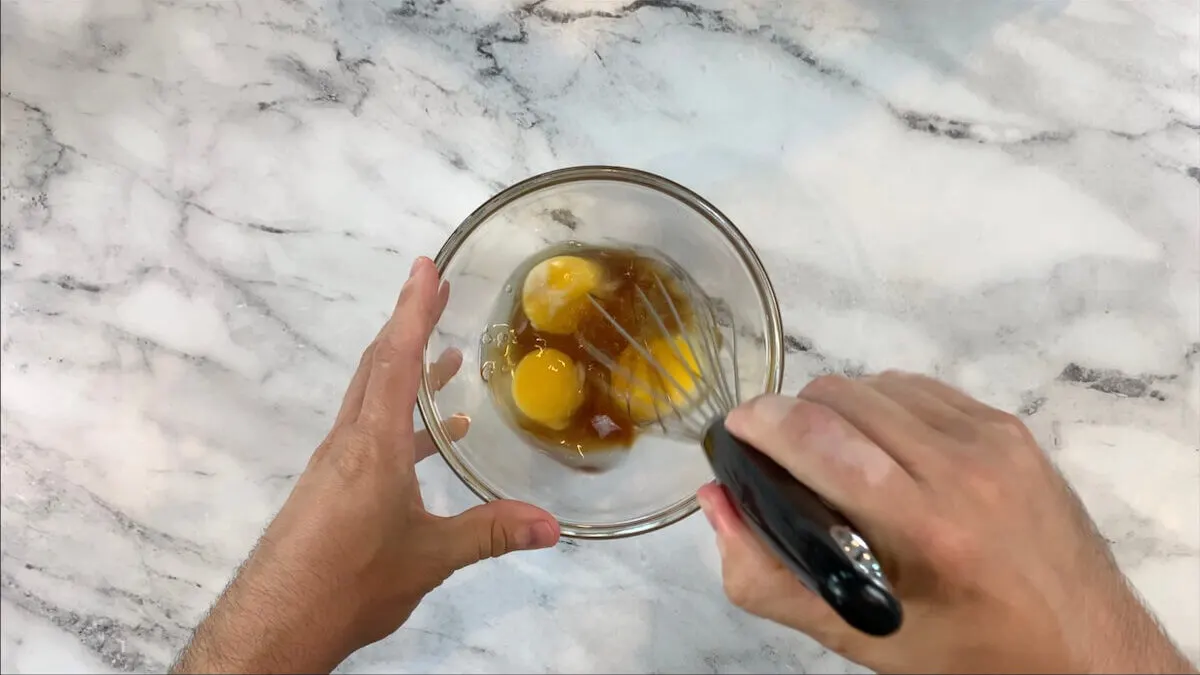
2. Heat a tamagoyaki pan or skillet on medium heat until hot.
3. Spread a thicker layer of oil on the bottom of the pan. I soak a folded paper towel in canola oil and use that to spread oil across the bottom and sides of the pan with tongs or chopsticks.
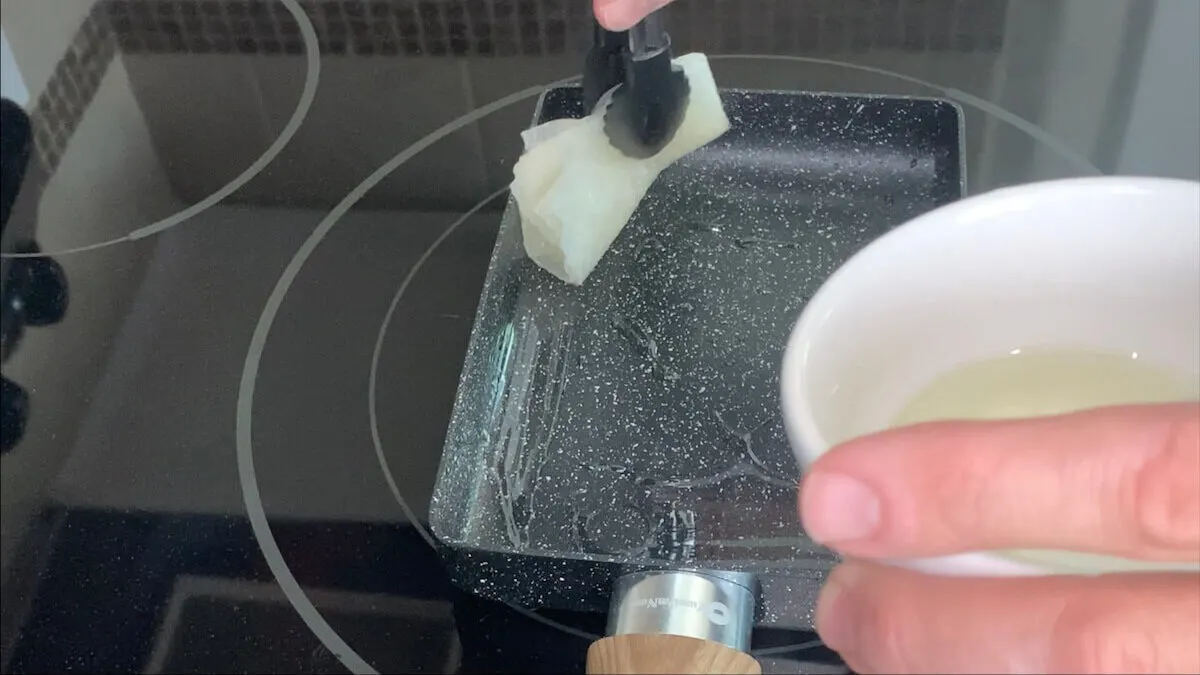
4. Pour approximately 1/4 of the egg mixture into the bottom of the pan. Tilt the pan to make sure it’s evenly spread across the bottom of the pan.
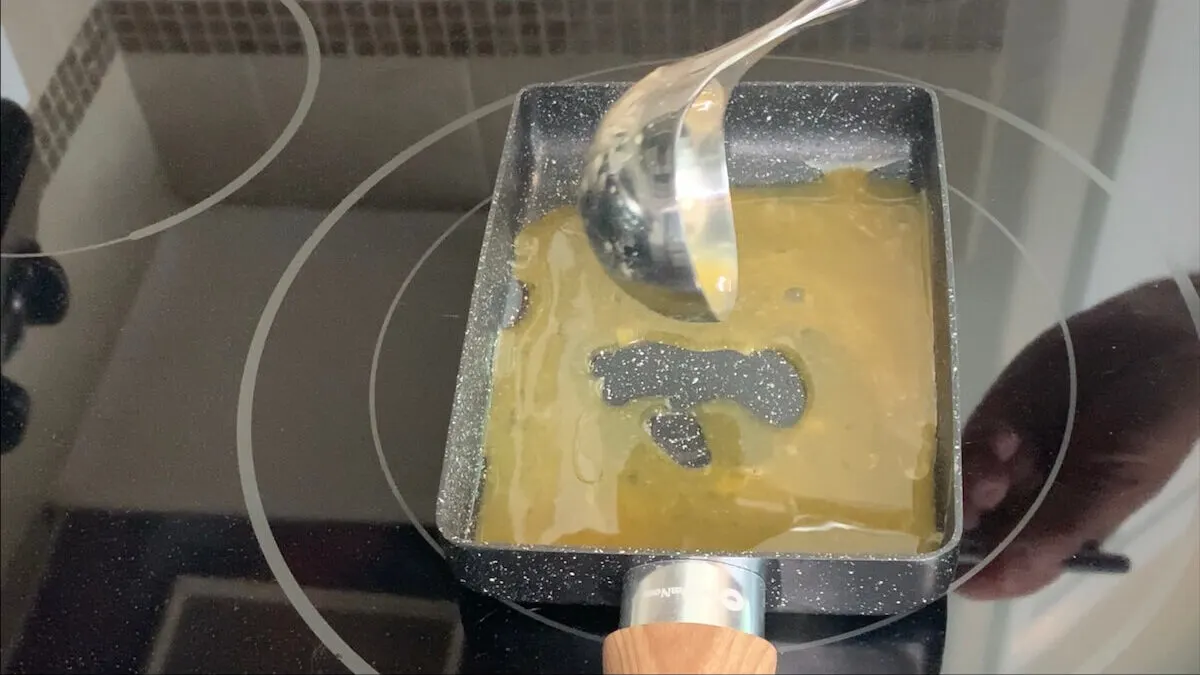
5. Once the egg starts cooking (around 30 seconds depending on how hot the pan is), use a spatula or chopsticks to fold the egg mixture on top of itself towards one side of the pan. At this stage, the omelette doesn’t need to look perfect. It will look better with each layer. Tip: Check out the video for this recipe to see a demonstration of this process.
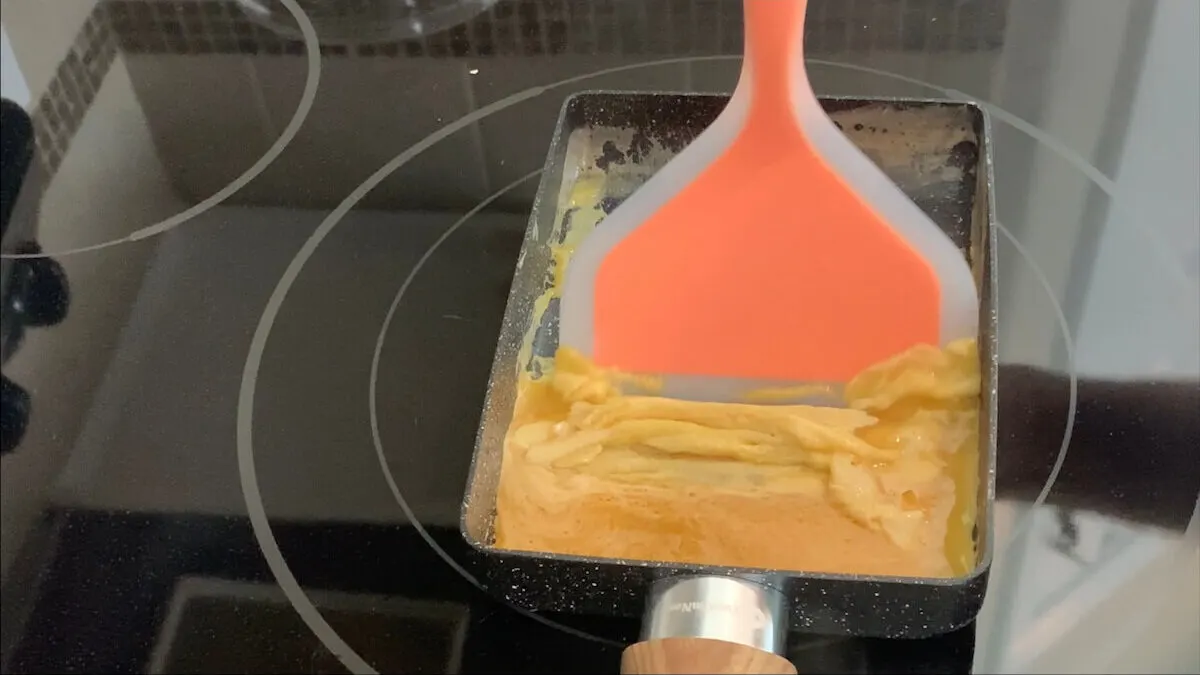
6. Add another 1/4 of the mixture to the bottom of the pan. Gently lift the mixture that has already been folded and tilt the pan assuring that the mixture is spread evenly across the bottom of the pan (including under the mixture that has already been folded).
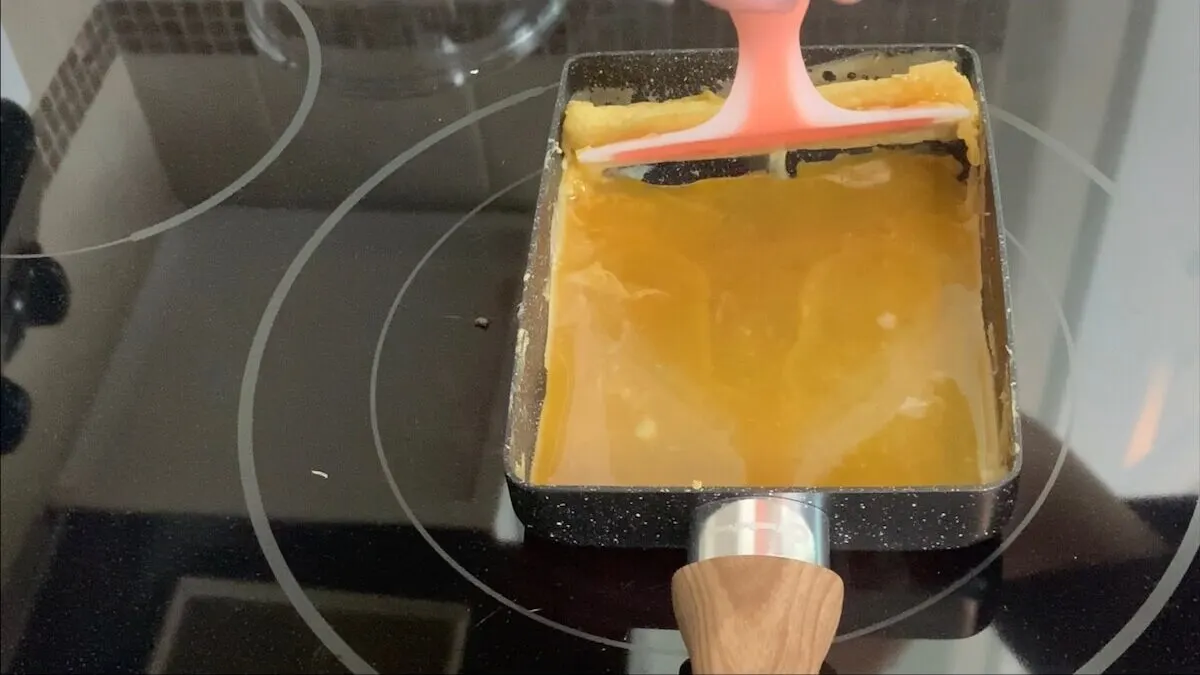
7. Once the second layer of egg starts cooking, use a spatula or chopsticks to fold the egg mixture on top of itself and the already cooked layer of folded egg. I like to use a spatula to form the egg into a rectangle shape as you fold each layer.
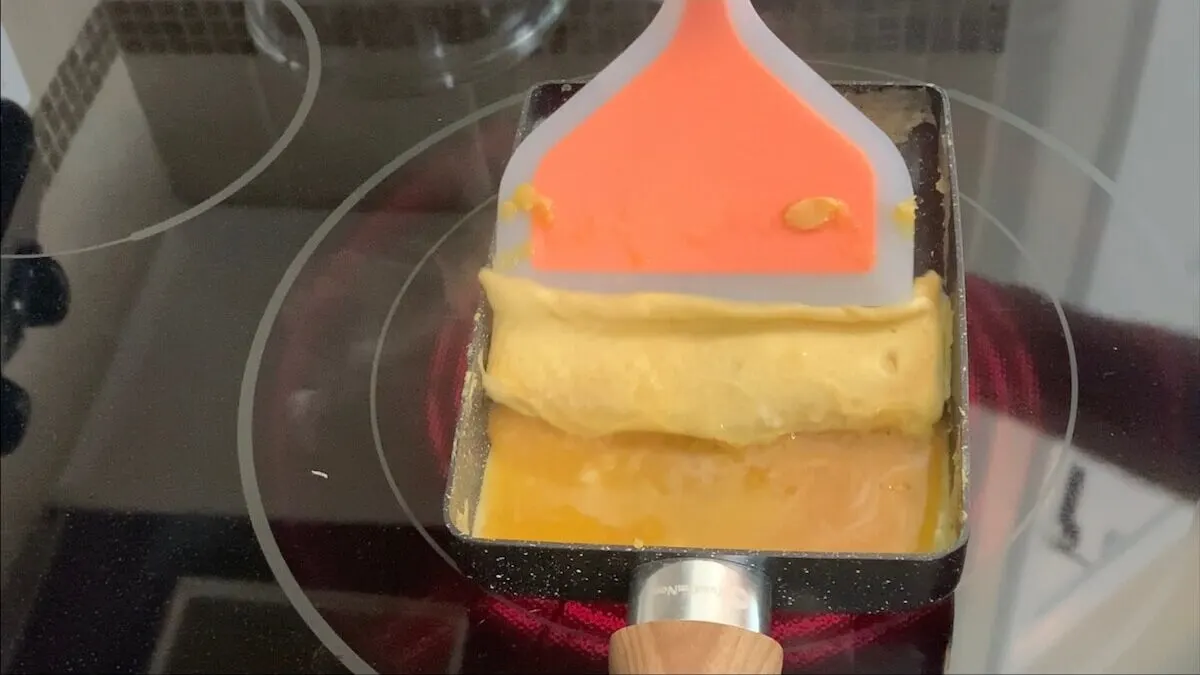
8. Repeat the process two more times until all the egg mixture has been used. You may need to add more oil to the pan between layers if you find that your eggs are sticking.
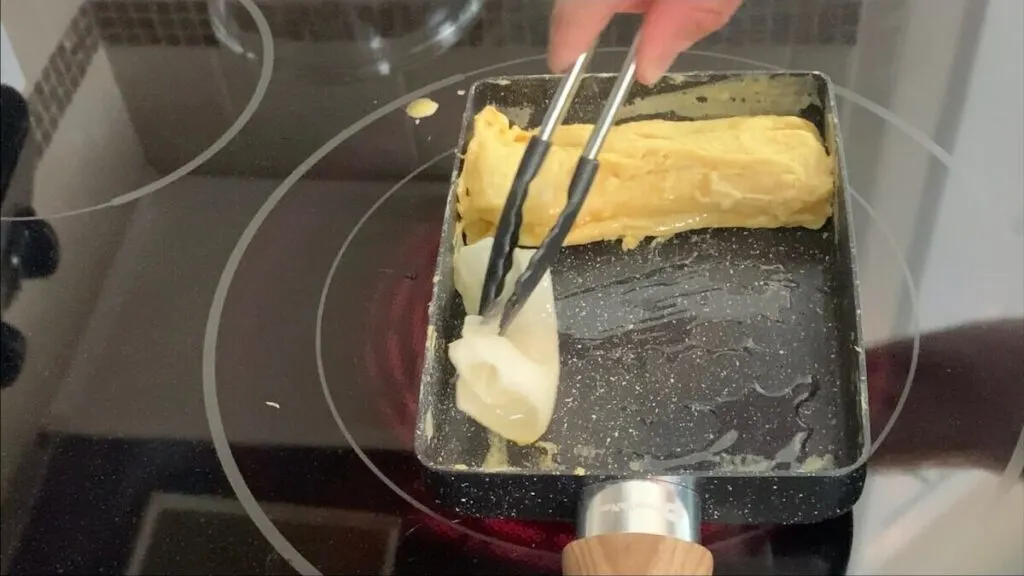
9. After the final layer, use a spatula to shape the tamagoyaki into a rectangle shape.
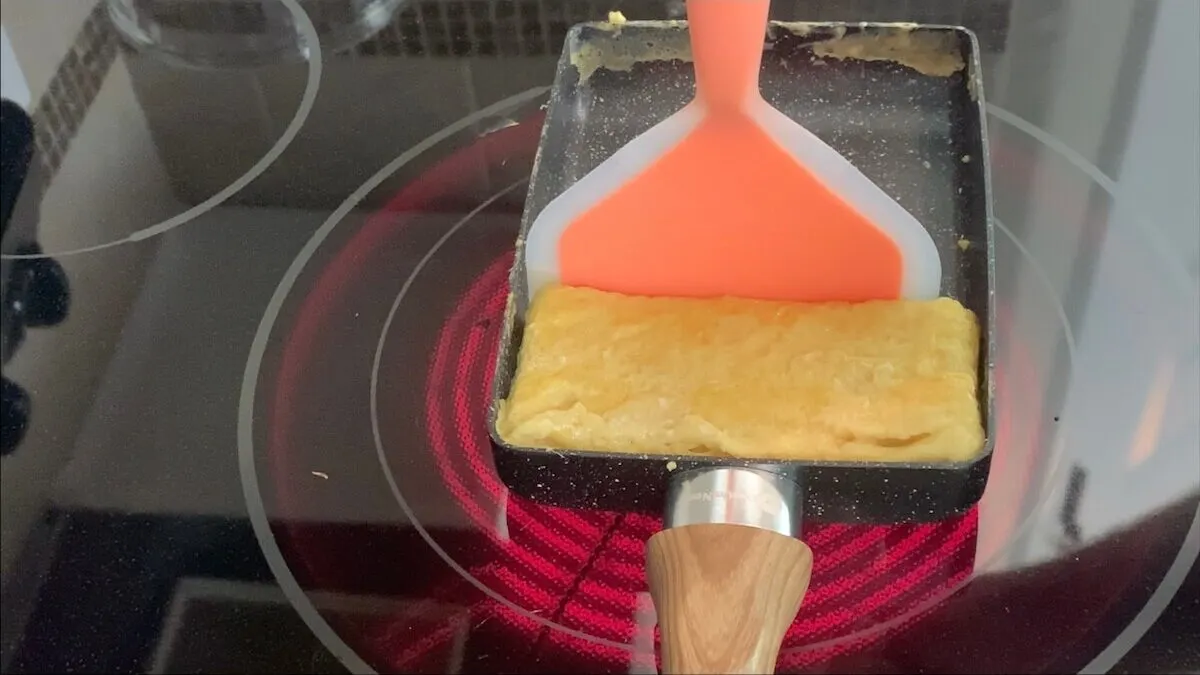
10. Once cooked, remove from heat and slice into 8 to 12 evenly sized slices depending on how thick you like your slices.
11. Serve and enjoy!
Tamagoyaki Recipe
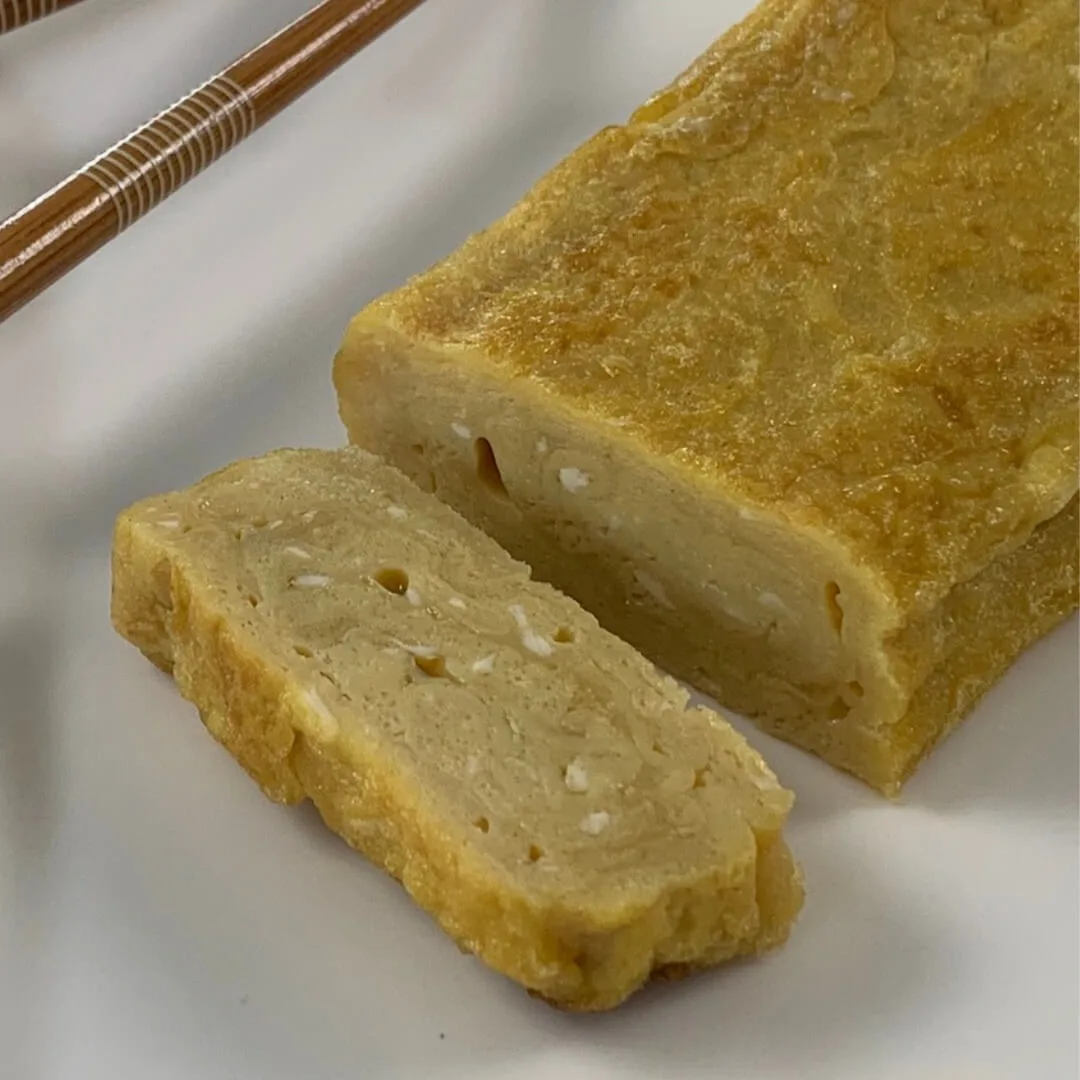
Tamagoyaki Recipe
Equipment
- Tamagoyaki Pan (Can be replaced with a small round non-stick pan)
- Mixing bowl
Ingredients
- 3 Eggs
- 1 Tbsp. Mirin
- 1 tsp. Dashi powder
- 1 tsp. Sugar
- 1 tsp. Soy sauce
- Canola oil (or other flavorless oil)
Instructions
- Add the eggs, mirin, soy sauce, sugar, and dashi powder to a mixing bowl and beat with a whisk until everything is thoroughly mixed. I like using dashi powder in this mixture because it provides a strong concentration of dashi flavor to the omelette. However, you can substitute with two tablespoons of dashi if you would like a more subtle dashi flavor in your tamagoyaki.
- Heat a tamagoyaki pan or skillet on medium heat until hot.
- Spread a thicker layer of oil on the bottom of the pan. I soak a folded paper towel in canola oil and use that to spread oil across the bottom and sides of the pan with tongs or chopsticks.
- Pour approximately 1/4 of the egg mixture into the bottom of the pan. Tilt the pan to make sure it's evenly spread across the bottom of the pan.
- Once the egg starts cooking (around 30 seconds depending on how hot the pan is), use a spatula or chopsticks to fold the egg mixture on top of itself towards one side of the pan. It doesn't need to look perfect in the first couple layers. It will look better after each layer. Tip: Check out the video for this recipe to see a demonstration of this process.
- Add another 1/4 of the mixture to the bottom of the pan. Gently lift the mixture that has already been folded and tilt the pan assuring the mixture is spread evenly across the bottom of the pan (including under the mixture that has already been folded).
- Once the second layer of egg starts cooking, use a spatula or chopsticks to fold the egg mixture on top of itself and the already cooked layer of folded egg. I like to use a spatula to form the egg into a rectangle shape as you fold each layer.
- Repeat the process two more times until all the egg mixture has been used. You may need to add more oil to the pan between layers if you find that your eggs are sticking.
- After the final layer, use a spatula to shape the tamagoyaki into a rectangle shape.
- Once cooked, remove from heat and slice into 8 to 12 evenly sized slices depending on how thick you like your slices.
- Serve and enjoy!
Video
Nutrition
Frequently Asked Questions
Is tamagoyaki a traditional Japanese dish?
Yes! Tamagoyaki is enjoyed throughout Japan in a wide range of dishes from the everyday to the fancy.
Is tamagoyaki gluten-free?
If ordered from a restaurant, tamagoyaki will likely contain gluten as soy sauce is used to prepare it. However, if you make it yourself you can easily use a gluten-free soy sauce in your recipe making the tamagoyaki gluten-free.
Is tamagoyaki healthy?
Yes. As the primary ingredient is egg, tamagoyaki is very healthy for you as eggs are high in protein and contain several vitamins.
Final Thoughts on Tamagoyaki
If you enjoy Japanese food, tamagoyaki is a must try. While it’s a little tricky to make at first, with a little practice you’ll be a pro. Happy cooking!
For more fun recipes, check out the below articles:
Unagi Don (Eel Rice Bowl) Recipe
Also, subscribe to our YouTube Channel for some great videos!
